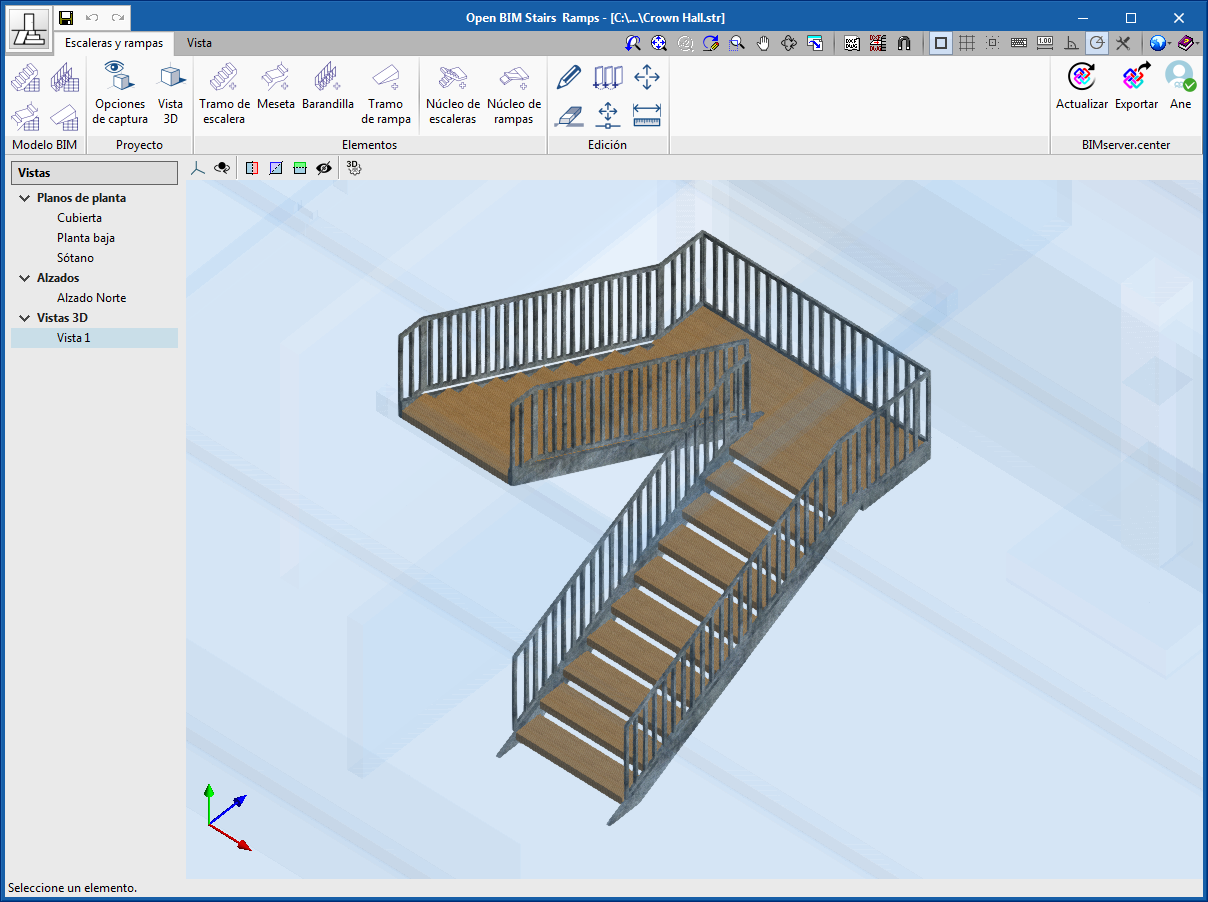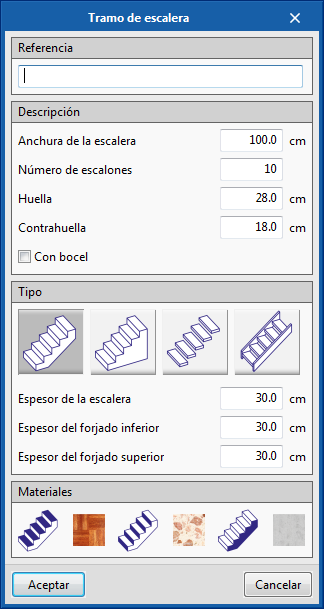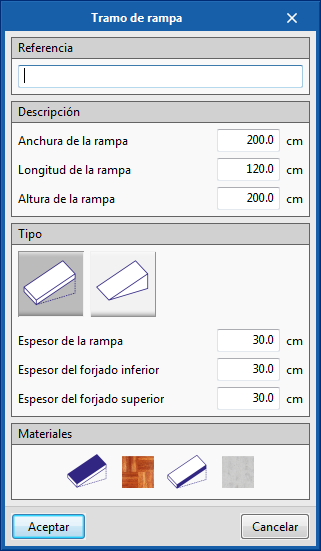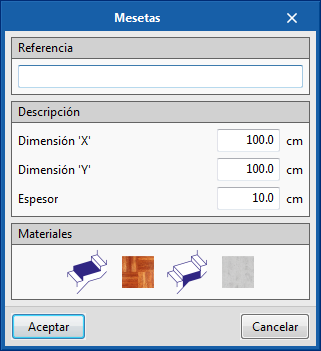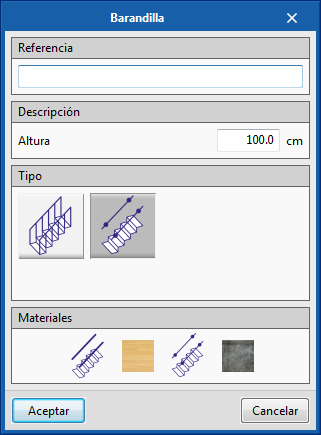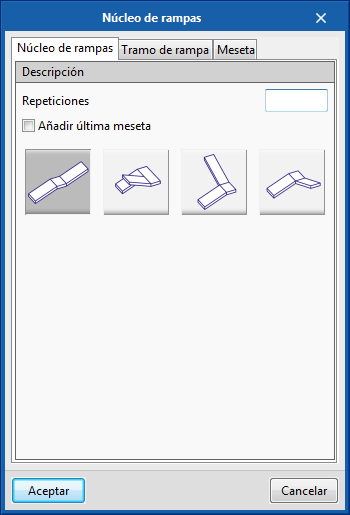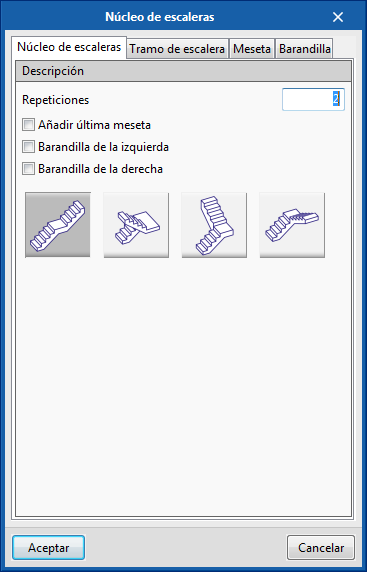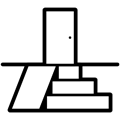
"Open BIM Vertical Connections" is a free application designed to carry out the architectural modelling of stairs, ramps and lifts.
"Open BIM Vertical Connections" is integrated into the Open BIM workflow via the BIMserver.center platform.
Description
"Open BIM Vertical Connections" is a free software tool whose main objective is to carry out the architectural modelling of stairs, ramps and lifts in BIM projects.
The program is integrated into the Open BIM workflow, which allows users to import and export models located on the BIMserver.center platform and be part of the collaborative, multidisciplinary and multi-user workflow Open BIM technology provides.
Starting off
To start working with the program, users must connect the project they are going to start to an existing BIM project on the BIMserver.center platform that contains a model with the geometry of the building (generated by CAD/BIM programs such as IFC Builder, Allplan®, Archicad® or Revit®).
With "Open BIM Vertical Connections", users can automatically generate stairs or ramps by individual spans, stairwells, ramp cores and lifts.
For stairs and ramps, the basic units of the program are the stair span, the ramp span, the landing and railings. Using these four elements, the stairs and ramps in an Open BIM project can be generated.
Stairs and ramps by spans
Using the following tools, users can introduce stairs and ramps by drawing each span individually.
- New stair span
The “Stair span” command creates a straight stair span, where users can configure: the width, number of steps, tread, riser and bocel.
Users can choose amongst different stair designs, such as: in situ, monolithic, floating or precast. Depending on the type of stair that is chosen, additional data, such as the thickness of the upper and lower floor slab, must be added.
Finally, the program provides a range of finishes for the stair from which to choose amongst in a library of different materials. - New ramp span
The “Ramp span” command creates a straight ramp span, where users can configure: the width, length and height of the ramp, tread, riser and nosing.
Users can choose amongst different ramp designs, such as: in situ or monolithic. Depending on the type of ramp that is chosen, additional data, such as the thickness of the upper and lower floor slab, must be added.
Finally, the program provides a range of finishes for the ramp from which to choose amongst in a library of different materials. - New landing
The “Landing span” command creates a landing that can be used for stairs or ramps. Users can define the “x” and “y” dimensions, and thickness of the landing.
The final finish of the landings can also be chosen from the different materials that are provided in the library. - New railings
The “Railings” command creates a straight railing span, where its height can be configured.
Users can choose amongst different types of rails (bars and handrails).
As with the previous elements, their final finish can be selected from a library containing different materials.
To introduce a rail, users must indicate the point where it begins and the point where it ends.
Stairwells and ramp cores
The "Stairwells" and "Ramp core" tools allow users to introduce these elements by defining each of the elements they are composed of. This way, the time required to generate the models is reduced since it consists of repeating individual spans.
Both tools contain all the commands mentioned in the “Stair and ramps by spans” section, in a single panel, where the number of repetitions of each element that makes up the stairwell or ramp core can be indicated.
Lifts
The lifts that are introduced can be configured by users. They can modify the size of the cabin, the stops or type of opening.
Open BIM workflow
"Open BIM Vertical Connections" is integrated into the Open BIM workflow via the BIMserver.center platform. The program currently exchanges the following information with the linked BIM project:
- Imports
- 3D view
“Open BIM Vertical Connections” displays the 3D view of all the models that are imported during the connection to the BIM model. - Architectural model
It is crucial that an architectural model that includes the roofs, the floor slabs and façades be included amongst these models. These elements are shown in the 3D data introduction window (3D interface) and serve as a reference to introduce stairs, ramps and lifts.
- 3D view
- Exports
"Open BIM Vertical Connections" exports a file in IFC format that contains:
- GLTF with a view of the ramps, stairs and lifts
- Information for other specialist software
The information on ramps and stairs that is generated in "Open BIM Connections", which may be required in "CYPEFIRE Pressure Systems", so it may carry out the necessary checks on a stair overpressure installation.
More information
Download, resources and available languages, license requirements...
Tel. USA (+1) 202 569 8902 // UK (+44) 20 3608 1448 // Spain (+34) 965 922 550 - Fax (+34) 965 124 950
